
A guest house remodel is a significant project and can easily cost over six figures. Learn how size, location, and any special features contribute to your guest house remodel cost.
Grab a brush and get painting, but don’t forget to prime


Bathrooms present a challenge for paint—they’re hot and humid, and vanities must withstand splattered toothpaste, sticky hairspray, and wet towels. This means bathroom vanity paint has to be tough, moisture-resistant, and able to stand up to regular cleaning. So choosing the best bathroom vanity paint means factoring in the paint’s durability and finish and how easy it is to work with.
We’ve rounded up five different types of paint that can work for your project. A cabinet painter can help you choose between these paints and make your vanity functional and like new.
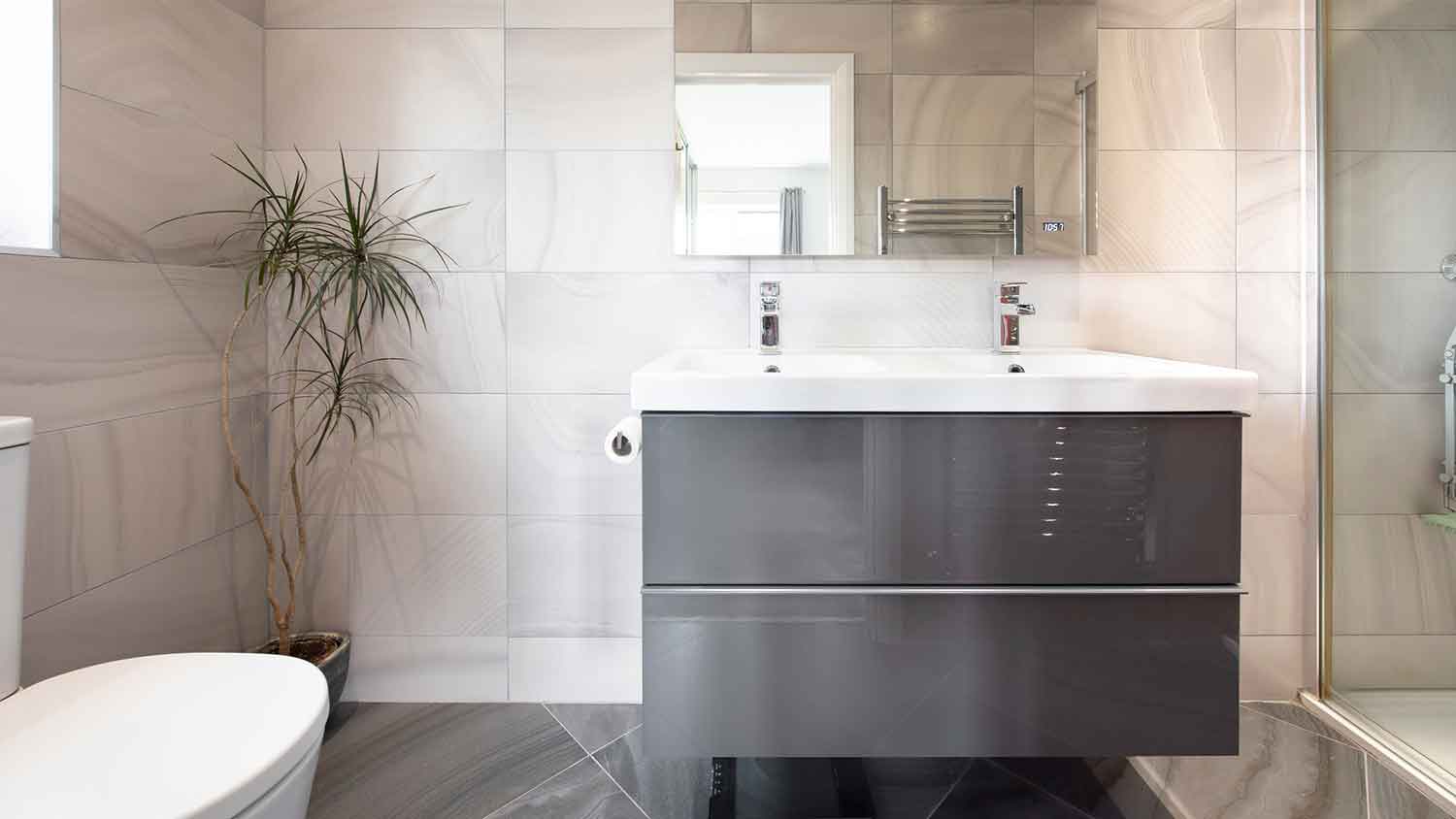
Oil-based paint, also called alkyd- or solvent-based, dries with a hard and glossy finish. Some homeowners gravitate toward oil-based paints because they’re easy to clean and highly durable, which is perfect for the high-humidity, high-traffic environment of bathrooms where they can protect the vanity from water damage.
The downside to oil-based paints is that they can be difficult to work with because they’re slow to dry, and you’ll need to clean your brushes and rollers with mineral spirits instead of water.
Oil-based paints also have high levels of VOCs, or volatile organic compounds, that have a strong odor and can pose health hazards and environmental risks. Breathing in the fumes from oil paints can cause dizziness, headaches, and eye irritation. While you can throw away latex-based paint, you should take oil-based paint to a designated waste collection site for disposal.
| Pros | Cons |
|---|---|
| Hides brush marks | May yellow over time |
| Highly durable finish | Difficult to clean brushes and rollers |
| Easy to clean the surface after it dries | Strong odor and high VOCs |
Best for: High-traffic bathrooms

Latex paint is a favorite among DIYers thanks to its quick drying time and easy cleanup. You can clean this water-based paint with soap and water, and it has a lower odor and fewer VOCs than oil-based paint. It also comes in various finishes, including sheen, semi-gloss, and gloss. It’s less durable than oil-based paint, so you’ll likely need to finish restoring the bathroom vanity with a topcoat.
| Pros | Cons |
|---|---|
| Easy to clean brushes and rollers with soap and water | Not as durable as oil-based or hybrid alkyd enamel paints |
| Low odor and VOCs | Requires multiple coats |
| Quick dry time | Requires surface prep |
Best for: DIYers who want a fast-drying, easy-to-clean, and durable finish
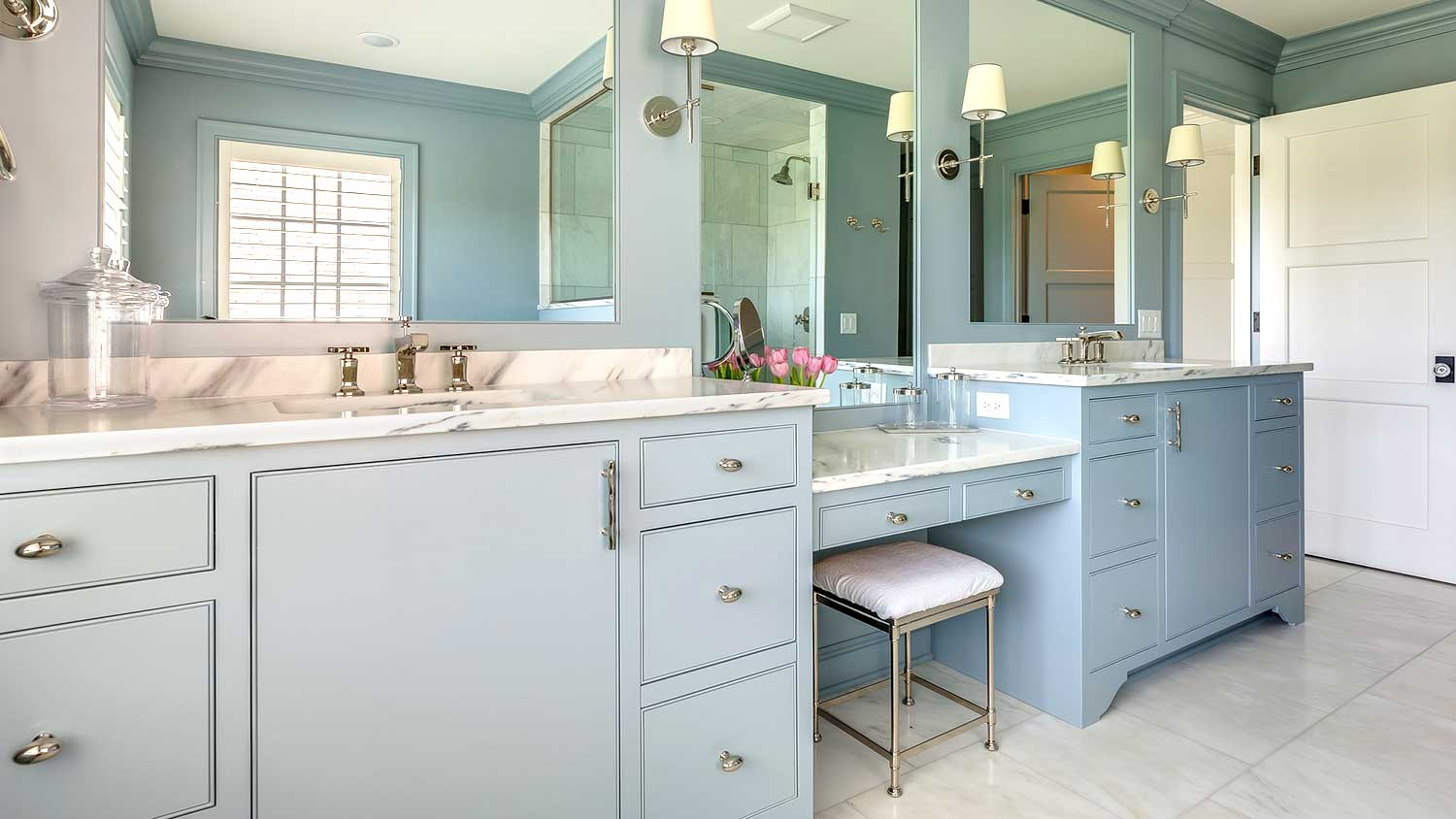
If you can’t decide between latex- and oil-based paint, hybrid alkyd enamel paint might be the right choice. Complicated name aside, this is a latex paint that contains oil molecules. You can clean your brushes and rollers with soap and water, but the oil molecules give the paint more durability once it dries, making it the best of both worlds.
| Pros | Cons |
|---|---|
| Won’t yellow over time like oil-based paint | More expensive than latex- or oil-based paint |
| Emits fewer VOCs than oil-based paint | Not as durable as oil-based paint |
| Easy to clean brushes and rollers with soap and water | Emits more VOCs than latex paint |
Best for: Homeowners who want the durability of an oil-based paint with the ease of using latex
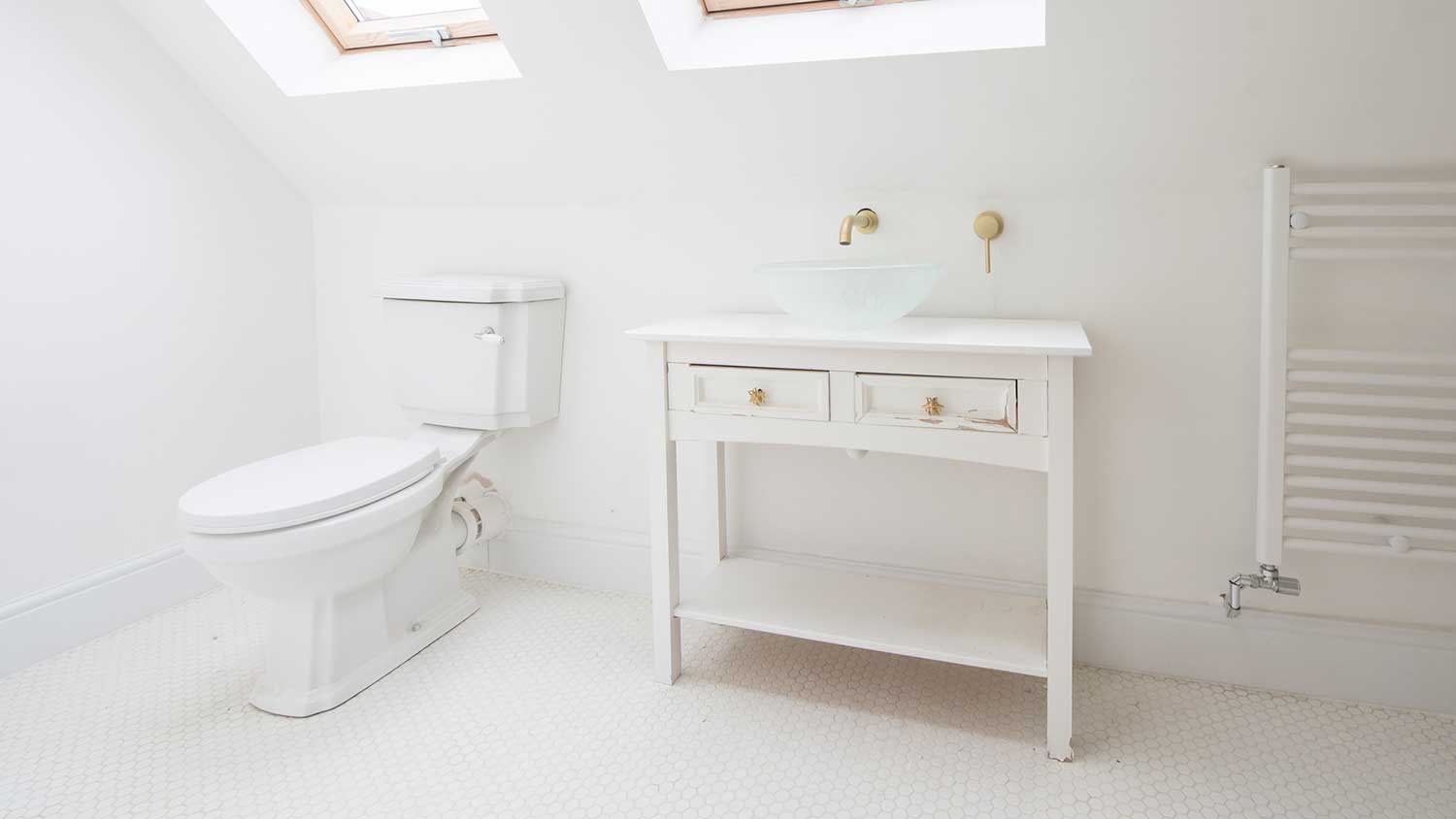
Invented in 1990 by Annie Sloan, chalk paint (not to be confused with chalkboard paint) was designed to be easy to use on multiple surfaces, including bathroom vanities. Its signature matte finish lends a rustic or shabby chic appearance. It’s fast-drying and a good choice for DIYers who need forgiving materials.
Chalk paint isn’t as durable as oil-based or hybrid alkyd enamel paints. However, since it’s intended to appear vintage, a few scuffs and nicks can enhance rather than detract from its appearance and allow you to create a vanity with instant character. If you want a glossier or more durable finish, apply a final coat of wax to protect the surface.
| Pros | Cons |
|---|---|
| Easy to use and DIY-friendly | Matte finish is not suitable for all styles |
| Mixing colors creates unique shades | Not as durable as oil, latex, or hybrid alkyd enamel |
| Rustic appearance | Requires a wax finish for added durability |
Best for: Shabby chic, rustic, or modern farmhouse designs
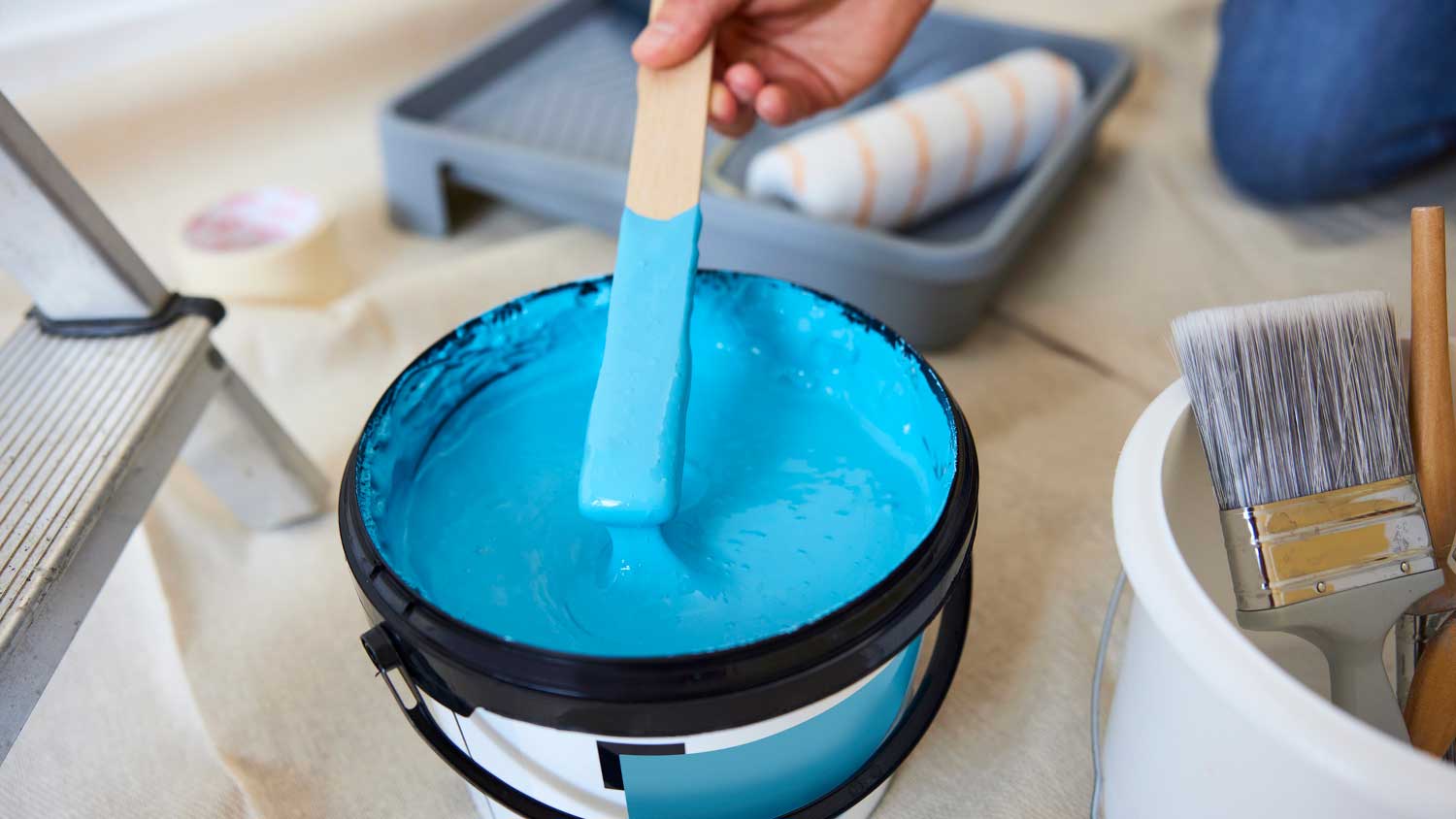
Milk paint is made from natural ingredients, such as milk protein, clay, lime, and pigments. It doesn’t include VOCs or other harmful ingredients, like preservatives or other chemicals that can cause headaches and skin and eye irritation. This nontoxic paint is perfect for indoor use, especially in areas where kids and pets play. It comes in powdered form, and you’ll mix it with water when you’re ready to start painting.
Milk paint works best on wood as it doesn’t stick to nonporous surfaces well, but this may be the right choice if your bathroom vanity is wood (as most are). However, remember that it’s not as durable as other types of paint.
| Pros | Cons |
|---|---|
| Natural and nontoxic | Use within 24 hours after mixing |
| No odor once it’s dry | Mixing is an extra step in the process |
| Ability to mix just the desired amount | Requires sealing when used in the bathroom |
Best for: Health-conscious homeowners who want a natural product
Paints come in different finishes based on how much sheen they display when dry. Finishes include:
Matte: Also called “flat,” a matte finish has no sheen
Eggshell: A matte appearance with a slight sheen, reminiscent of a chicken’s egg
Satin: Minimal sheen to create a luxurious appearance
Semi-gloss: Falls between satin and high-gloss and is more moisture-resistant and easy to clean
High-gloss: High-shine, light-reflecting appearance
Semi-gloss is the best finish to use on a bathroom vanity. Semi-gloss finishes are more durable than matte or sheen finishes, so they’re less prone to scratches, and you can wipe them clean. High-gloss is very shiny and may not fit in with the feel of the bathroom. Semi-gloss features the best balance of durable gloss without being too high-shine.
Regardless of the paint you choose, use a primer before painting your bathroom cabinets. Lightly sand the vanity's surface and remove all dust with a damp cloth or wet-dry vacuum. Then, you’re ready to apply the primer.
For bathrooms, an oil-based primer will help protect the vanity from moisture and stains, and you can follow with an oil- or latex-based topcoat. Chalk paint doesn’t require a primer, but an extra layer will help with durability.
You should apply a sealant to the bathroom vanity unless you’re using oil-based or hybrid alkyd paint. This will help the paint withstand the humid bathroom environment and make cleaning easier.
Painting a bathroom vanity is a simple DIY job, but it will take some time. Before painting, remove everything from the top of the vanity and empty out the drawers and cabinets. Protect the floor, toilet, and any other surface that might get splattered with paint with drop cloths or sheets. Remove the vanity door and drawers and prep, prime, and paint them separately for best results. Allow everything to dry thoroughly before adding a second coat, and then allow it to dry again before applying the sealant.
If you want a bathroom vanity refresh but don’t want to tackle it alone, you can contact a local cabinet painter to complete the job. If you need other repairs done in the bathroom, contact a bathroom remodeler to fix any issues and leave you with a brand-new bathroom feel.
From average costs to expert advice, get all the answers you need to get your job done.

A guest house remodel is a significant project and can easily cost over six figures. Learn how size, location, and any special features contribute to your guest house remodel cost.

Remodeling your bathroom can add significant value to your home. Your bathroom remodel cost in Columbus, OH will depend on size, fixtures, materials, labor, and other factors.

The cost to demo a kitchen depends on its size, construction complexity, materials, and whether you DIY the job or not. This guide will help you budget better.
.jpg?impolicy=leadImage)
Walk-in showers offer plenty of benefits when compared to standard bathtubs, but are they right for you? Discover the pros and cons of walk-in showers.
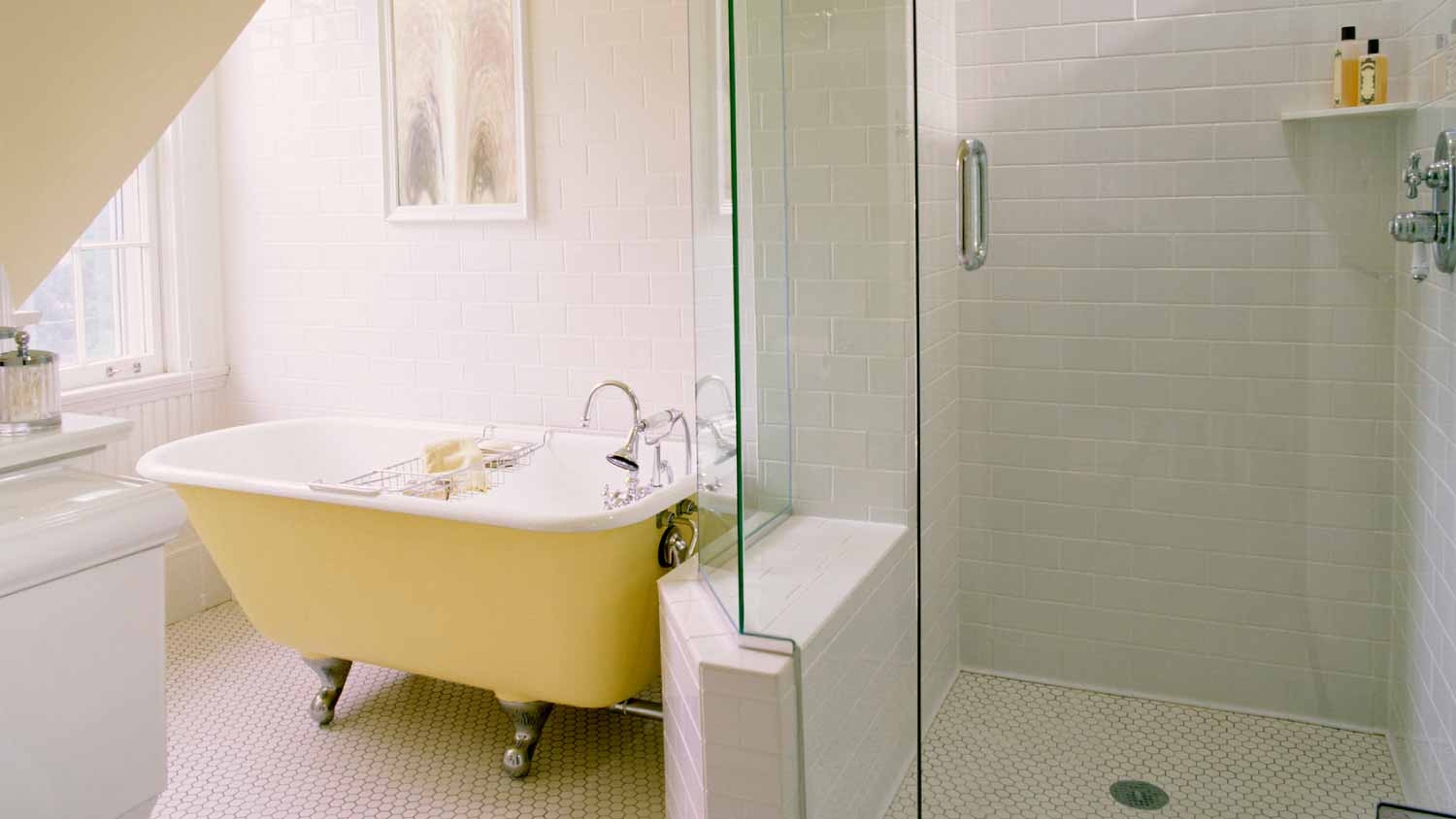
An updated bathtub can give a bathroom a whole new look. Find out how much it costs to replace a bathtub in Indianapolis, IN, including prices by type and labor costs.

If you’re wondering who installs bathroom exhaust fans, you can call several different types of pros, or do it yourself, depending on your needs.